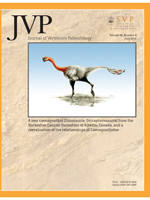Geometric morphometrics (GM) and finite element analysis (FEA) are increasingly common techniques for the study of form and function. We show how principles of quantitative evolution in continuous phenotypic traits can link the two techniques, allowing hypotheses about the relative importance of different functions to be tested in a phylogenetic and evolutionary framework. Finite element analysis is used to derive quantitative surfaces that describe the comparative performance of different morphologies in a morphospace derived from GM. The combination of two or more performance surfaces describes a quantitative adaptive landscape that can be used to predict the direction morphological evolution would take if a combination of functions was selected for. Predicted paths of evolution also can be derived for hypotheses about the relative importance of multiple functions, which can be tested against evolutionary pathways that are documented by phylogenies or fossil sequences. Magnitudes of evolutionary trade-offs between functions can be estimated using maximum likelihood. We apply these methods to an earlier study of carapace strength and hydrodynamic efficiency in emydid turtles. We find that strength and hydrodynamic efficiency explain about 45% of the variance in shell shape; drift and other unidentified functional factors are necessary to explain the remaining variance. Measurement of the proportional trade-off between shell strength and hydrodynamic efficiency shows that throughout the Cenozoic aquatic turtles generally sacrificed strength for streamlining and terrestrial species favored stronger shells; this suggests that the selective regime operating on small to mid-sized emydids has remained relatively static.
How to translate text using browser tools
1 July 2016
Combining Geometric Morphometrics and Finite Element Analysis with Evolutionary Modeling: Towards a Synthesis
P. David Polly,
C. Tristan Stayton,
Elizabeth R. Dumont,
Stephanie E. Pierce,
Emily J. Rayfield,
Kenneth D. Angielczyk






